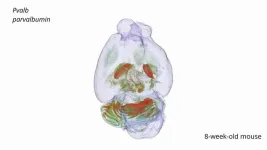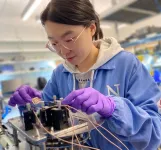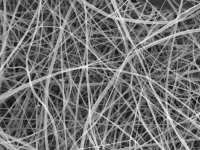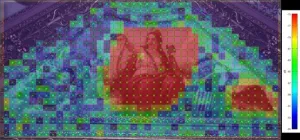(Press-News.org) Many public water systems in the United States use inorganic chloramines to disinfect drinking water, but their decomposition products have long been a mystery. In a new study, researchers report the discovery of chloronitramide anion – a compound whose existence, though not identity, has been known for 30 years. Detected in the tap water of millions of Americans, this compound’s toxicity remains untested, prompting calls for immediate toxicological evaluation and raising questions about the safety of chloramine in public water supplies. For over a century, chemical disinfection of public water supplies has effectively reduced waterborne disease by killing pathogens in drinking water. Inorganic chloramines, like monochloramine (NH22Cl) and dichloramine (NHCl2), have become widely used in the U.S. for this purpose and are used to treat the tap water of nearly one-third Americans. However, for decades, chloramine decomposition has been suspected of producing elusive chemical by-products, including potential nitrogen-containing compounds with unknown toxicity. One such disinfection by-product, referred to simply as an “unidentified product”, remains uncharacterized despite being first identified more than 40 years ago. By combining classic synthesis methods with advanced analytical techniques like high-resolution mass spectrometry and nuclear magnetic resonance (NMR) spectroscopy, Julian Fairey and colleagues isolated and identified chloronitramide anion (Cl–N–NO2-) as a previously unidentified product of inorganic chloramine decomposition. Fairey et al. measured chloronitramide anion content in a range of chloraminated water systems in the U.S., detecting levels as high as ~100 micrograms per liter (μg/l), which surpasses the typical regulatory limits for many disinfection by-products (60–80 μg/liter). Notably, this compound was absent in water systems that used alternative disinfectants. Although direct toxicological studies have not yet been conducted, the authors caution that computational analyses suggest that chloronitramide anion may not be benign, emphasizing the need for an immediate toxicological assessment and quantification in source waters, finished drinking waters, and wastewater effluents. “The findings of Fairey et al. may trigger a reevaluation of the wisdom of chloraminating public water supplies,” writes Daniel McCurry in a related Perspective. “Regardless of whether chloronitramide anion is found to be toxic or not, its discovery warrants a moment of reflection for water researchers and engineers.”
***A related embargoed news briefing was held on Tuesday, 19 November, as a Zoom Webinar. Recordings can be found at the following links:
Video: https://aaas.zoom.us/rec/share/9vgXlijMh1GT2RaVczoOs8HNjHQ1KXnZkpXCeBt29jVfTtS0pbSGcYUW3hCUd_Ym._bps7Fb6Rg80Jzff
Audio: https://aaas.zoom.us/rec/share/z30gghwhhhBZNqf3Syz1M19V9v40_lu7U8lD__tenAtWx8fo5ZBDOK4AjfEYsSMN.HpRiuXBzkb0zx0v9
The passcode for both is mD?+Fm9k
END
Chloronitramide anion – a newly characterized contaminant prevalent in chloramine treated tap water
Summary author: Walter Beckwith
2024-11-21
ELSE PRESS RELEASES FROM THIS DATE:
Population connectivity shapes cultural complexity in chimpanzees
2024-11-21
Cultural complexity in chimpanzees depends on migration and interaction between groups, echoing early human patterns of cultural evolution, researchers report in a new study. The findings offer insight into the development of cumulative culture in early hominins. Culture, defined as a set of socially learned behaviors, has been increasingly documented across various animal species. However, human culture stands out for its complexity and cumulative nature, where cultural knowledge builds upon previous innovations. While chimpanzees – humans’ closest relatives – demonstrate a variety of cultural ...
Direct hearing tests show that minke whales can hear high-frequency sounds
2024-11-21
For the first time, scientists have directly measured the hearing range of minke whales, discovering that the species can detect high-frequency sounds as high as 90 kilohertz (kHz), according to a new study, demonstrating hearing sensitivity far greater than previously believed. The findings suggest that baleen whales – the planet’s largest mammals – may be even more impacted by anthropogenic ocean noise than currently recognized but have been excluded from regulatory consideration due to underestimated hearing ranges. ...
Whale-ship collision risk mapped across Earth’s oceans
2024-11-21
By mapping global ship traffic and whale habitats, researchers found that 92% of whale habitats overlap with shipping routes, illuminating hotspots for whale-ship collision risk, according to a new study. Although only 7% of high-risk areas currently contain management strategies to reduce ship strikes, the findings show that expanding efforts to just 2.6% of the ocean’s surface could significantly reduce these fatal collisions, aiding whale conservation amid booming global shipping. “Mitigating the negative environmental impacts of marine shipping is essential ...
Bye-bye microplastics: new plastic is recyclable and fully ocean-degradable
2024-11-21
Researchers led by Takuzo Aida at the RIKEN Center for Emergent Matter Science (CEMS) have developed a new durable plastic that won’t pollute our oceans. The new material is as strong as conventional plastics and biodegradable, but what makes it special is that it breaks down in seawater. The new plastic is therefore expected to help reduce harmful microplastic pollution that accumulates in oceans and soil and eventually enters the food chain. The experimental findings were published Nov 22 in Science.
Scientists have been trying to develop safe and sustainable materials that can replace traditional plastics, which are non-sustainable and harm the environment. While ...
Unveiling nature of metal-support interaction: AI-driven breakthrough in catalysis
2024-11-21
How can Artificial Intelligence (AI) help accelerate scientific discovery based on vast amounts of experimental data? A new study by Prof. LI Weixue's team from the University of Science and Technology of China (USTC) of the Chinese Academy of Sciences shows how this can be achieved in heterogonous catalysis. The results were recently published in Science.
By integrating interpretable AI with experimental data, domain knowledge, and first-principles simulations, the researchers established a general theory of metal-support interaction (MSI), which is one of the most important pillars in catalysis.
Supported metal catalysts ...
New imaging method enables detailed RNA analysis of the whole brain
2024-11-21
Researchers at Karolinska Institutet and Karolinska University Hospital have developed a groundbreaking microscopy method that enables detailed three-dimensional (3D) RNA analysis at cellular resolution in whole intact mouse brains. The new method, called TRISCO, has the potential to transform our understanding of brain function, both in normal conditions and in disease, according to the new study published in Science.
Despite great advances in RNA analysis, linking RNA data to its spatial context has long been a challenge, especially in intact 3D tissue volumes. The TRISCO method now makes it possible to perform three-dimensional RNA imaging of whole ...
Stability of perovskite solar cells doubled with protective coating
2024-11-21
Northwestern University scientists have developed a new protective coating that significantly extends the life of perovskite solar cells, making them more practical for applications outside the lab.
Although perovskite solar cells are more efficient and less expensive than traditional silicon solar cells, perovskite has, until now, been limited by its lack of long-term stability. Typically, perovskite solar cells uses an ammonium-based coating layer to enhance efficiency. While effective, ammonium-based layers degrade under environmental stress, such as heat and moisure.
Northwestern ...
Chemists create world’s thinnest spaghetti
2024-11-21
The world’s thinnest spaghetti, about 200 times thinner than a human hair, has been created by a UCL-led research team.
The spaghetti is not intended to be a new food but was created because of the wide-ranging uses that extremely thin strands of material, called nanofibers, have in medicine and industry.
Nanofibers made of starch – produced by most green plants to store excess glucose – are especially promising and could be used in bandages to aid wound healing (as the nanofiber mats are highly porous, allowing water and moisture in but keeping ...
Empowering neuroscience: Large open brain models released
2024-11-21
The hippocampus is one of the most fascinating brain regions. Associated with the formation of memories, it also helps us to navigate through the world without getting lost. Sensory cortices on the other hand play an important role in how we perceive our environment and make appropriate movements, and how our brains determine what to focus on and what to ignore. While both regions have been extensively studied and many of their secrets revealed, there is still a lot we do not understand about them due to the high complexity of ...
From traditional to technological: Advancements in fresco conservation
2024-11-21
MELVILLE, N.Y., Nov. 21, 2024 – Fresco painting, a technique that dates back to antiquity, involves applying dry pigments to wet plaster, creating stunning artwork that can last for centuries. Over time, however, these masterpieces often face degradation due to delamination, where decorative plaster layers separate from the underlying masonry or structural plaster. This deterioration can compromise the structural integrity of the artwork, necessitating restoration efforts.
Historically, conservators have gently knocked on the plaster with their knuckles or small mallets to assess the condition of the fresco. By listening to the emitted sound, they could identify the delaminated areas ...
LAST 30 PRESS RELEASES:
Sleeping in on weekends may help boost teens’ mental health
Study: Teens use cellphones for an hour a day at school
After more than two years of war, Palestinian children are hungry, denied education and “like the living dead”
The untold story of life with Prader-Willi syndrome - according to the siblings who live it
How the parasite that ‘gave up sex’ found more hosts – and why its victory won’t last
When is it time to jump? The boiling frog problem of AI use in physics education
Twitter data reveals partisan divide in understanding why pollen season's getting worse
AI is quick but risky for updating old software
Revolutionizing biosecurity: new multi-omics framework to transform invasive species management
From ancient herb to modern medicine: new review unveils the multi-targeted healing potential of Borago officinalis
Building a global scientific community: Biological Diversity Journal announces dual recruitment of Editorial Board and Youth Editorial Board members
Microbes that break down antibiotics help protect ecosystems under drug pollution
Smart biochar that remembers pollutants offers a new way to clean water and recycle biomass
Rice genes matter more than domestication in shaping plant microbiomes
Ticking time bomb: Some farmers report as many as 70 tick encounters over a 6-month period
Turning garden and crop waste into plastics
Scientists discover ‘platypus galaxies’ in the early universe
Seeing thyroid cancer in a new light: when AI meets label-free imaging in the operating room
Neutrophil-to-lymphocyte ratio may aid risk stratification in depressive disorder
2026 Seismological Society of America Annual Meeting
AI-powered ECG analysis offers promising path for early detection of chronic obstructive pulmonary disease, says Mount Sinai researchers
GIMM uncovers flaws in lab-grown heart cells and paves the way for improved treatments
Cracking the evolutionary code of sleep
Medications could help the aging brain cope with surgery, memory impairment
Back pain linked to worse sleep years later in men over 65, according to study
CDC urges ‘shared decision-making’ on some childhood vaccines; many unclear about what that means
New research finds that an ‘equal treatment’ approach to economic opportunity advertising can backfire
Researchers create shape-shifting, self-navigating microparticles
Science army mobilizes to map US soil microbiome
Researchers develop new tools to turn grain crops into biosensors
[Press-News.org] Chloronitramide anion – a newly characterized contaminant prevalent in chloramine treated tap waterSummary author: Walter Beckwith




